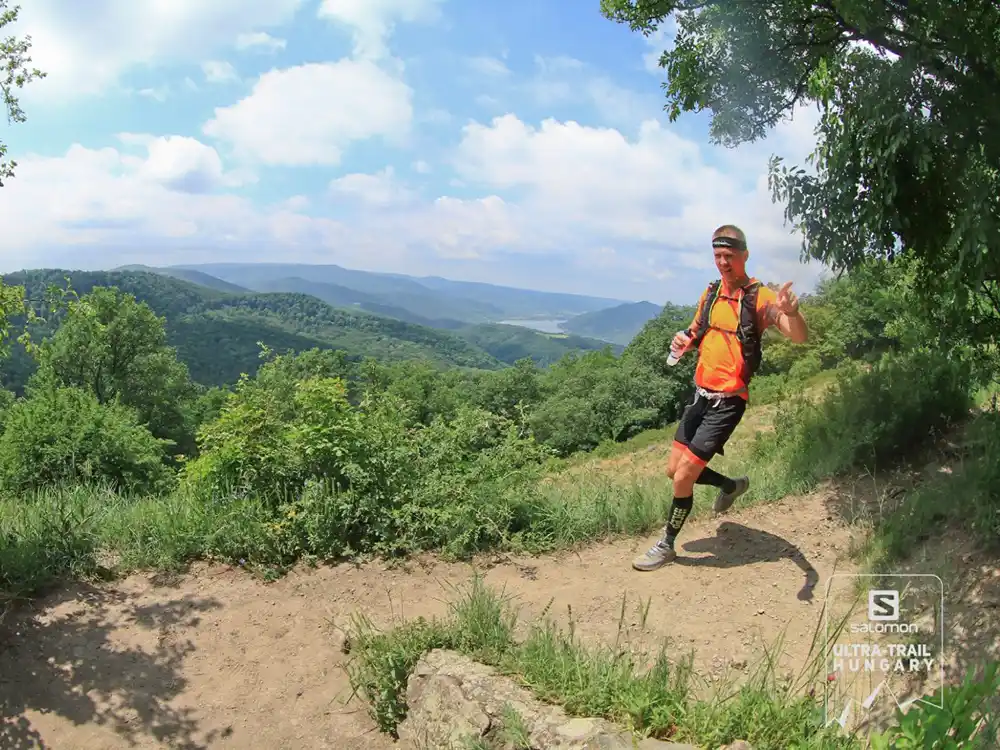When I think about it, there’s either not much to write about—or there’s too much to put into words. Some races go perfectly because it’s your day of days. Others fall apart halfway through when you hit the wall, and some, like this one, you know will be a disaster before they even begin. Salomon Ultra trail race fell into that last category.
Everything seemed set up for success: no injuries, no nagging issues, and my training plan had actually been on point. My wife and I even booked a cozy guesthouse just 6 km from the start/finish line—complete with a pool and a jacuzzi. The only catch? The weather forecast. And it wasn’t just bad—it was the worst possible. Heat and humidity. While some people thrive in those conditions, I’ve learned that it shaves off at least 30% of my performance.
I stared at the weather app, questioning if it was even worth going. But hey, pool and jacuzzi, right?
A Romantic Getaway, Ultra Style
We arrived, ready for our version of a romantic weekend getaway: checking in, stressing about race registration, snapping photos with the legends of Slovak ultra running, reconnecting with old friends, and scrambling to prepare for the morning. Yes, we even managed to enjoy the jacuzzi.
The final cherry on top of this romantic trip? Me vanishing for an entire day (the race started at 9 a.m.) and coming back as a cranky, smelly wreck. I honestly don’t know how my wife, Daška, puts up with me sometimes.
The Start Line

The race morning started in the usual way: standing in the start corral, joking around with friends. They mocked my original plan of carrying just one water bottle. Now, I was hauling a liter of water strapped to me—and even that felt insufficient.
The countdown began. The start was electric, as it always is at these events. For a brief moment, I got swept up in the racing mindset, running the first few kilometers at a pace of 4:30/km. But the sweat pouring down my face reminded me: This is not my day. I slowed down and shrugged it off. When you line up knowing you’re not racing for glory, you’re oddly at peace.
Finding Optimal Pace
I found a group moving at my speed—at least on the flats. They’d pull away on the climbs, and I’d catch up on the descents, which were the only parts of the trail where I felt remotely comfortable in the stifling humidity. I even struck up a conversation with a Hungarian runner who asked where I was from. His assessment? “Probably a strong club, huh?” I laughed.
But then, just 10 km in, it happened. Trying to avoid some unexpected mud (of which there was plenty), I landed awkwardly on my left foot. Pain shot up my side, and within minutes, I felt a sharp stabbing under my left rib cage. I had to stop several times, even on flat sections and climbs.
At that point, I had two options: either push through and hope it loosened up, or walk to the first aid station at 15 km and call for a ride. After 15 minutes of painfully slow progress, my breathing eased slightly. I couldn’t move my upper body much, but hey, I still had one functional arm.
Water Everywhere, But Never Enough
I made it to the first aid station, rehydrated, and tried to pick up the pace on the rolling section toward Vyšehrad. Surprisingly, this stretch went well—though on technical sections, I had to carefully watch my footing to avoid aggravating my left side.
From there, the race settled into a rhythm. No one passed me, and I didn’t overtake anyone either. At every aid station, I refilled my bottles to the brim, but they were always empty long before the next stop. My body simply couldn’t regulate its temperature.
Every puddle I found, I dunked my arms, head, and anything else that fit. At one checkpoint, a volunteer dumped a 5-liter jug of water over my head. It felt like being reborn—for about five minutes.
The Zombie Forest

Then came two brutal climbs. I remembered them well from 2018, when I lost second place in the 84 km race. They weren’t especially long, but they were so steep even Pajštún would be jealous. By this point, runners from the 80 km and 100 km races had merged with us. Everyone had picked out a tree to lean against, and the scene looked like something out of a zombie movie.
Finally, I reached the summit. From here, it was just 10 km downhill to the finish. Easy, right? Fueled by excitement, I bolted down the wide forest road, only to realize I hadn’t seen any course markings for a while. Damn it.
I checked my watch’s GPS—800 meters past the last turn. Worse, a group of 100 km runners had followed me. Convincing them to turn back wasn’t easy, but I managed. Uphill again we went.
A Hard-Earned Finish

The last 5 kilometers were on asphalt under the blazing sun. Oddly, I welcomed the heat after leaving the humidity of the forest. Knowing the end was near, I pushed hard—not for a better placement (I somehow finished 14th overall, to my shock) but just to get it over with and see my wife.
The finish was everything I needed: catching up with friends, learning that Martin had crushed the 84 km race, and even jumping into the Danube for the first time in my life (ironic, since I’m from Bratislava).
Reflecting on the Race

Those climbs stuck with me. Despite the suffering, they felt like my kind of challenge. By the time we drove home, my mind was already churning.
What if I came back and completed all the different distances this event offers? The idea is stuck now. And if ultra running has taught me anything, it’s that once an idea takes root, there’s no stopping it.



